
The LADG upends "traditional notions" for Los Angeles bungalow remodel
Stucco and asphalt are found on the exterior of a 1920s bungalow that has been revamped by local firm The LADG, which sought to challenge traditional views of the housing typology.
The project – officially called House in Los Angeles 5 – involved updating and extending the bungalow in LA's Larchmont Village neighbourhood, which was originally built in 1929.
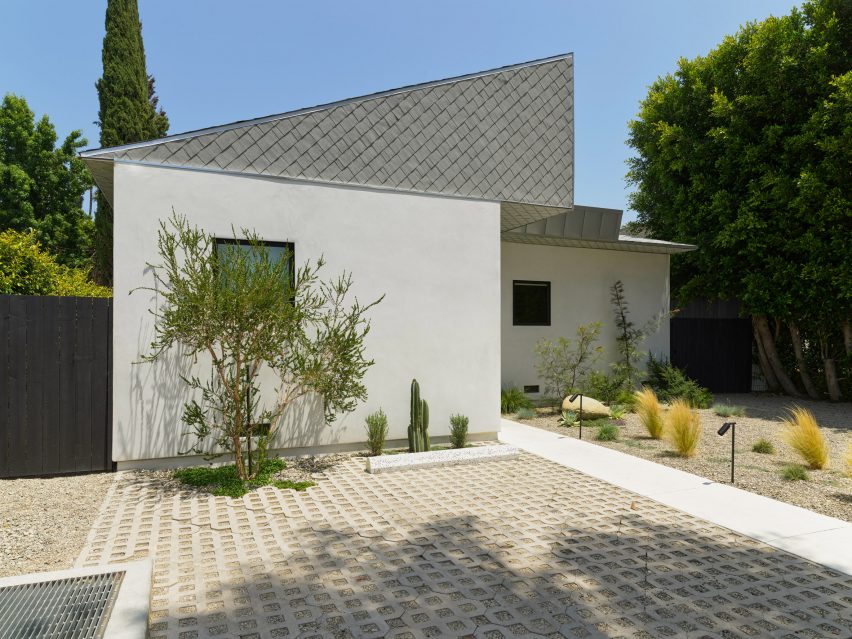
The LADG, or The Los Angeles Design Group, designed the project for their publicist and her family. The studio was tasked with rethinking the layout and aesthetics of a traditional single-family home.
The existing bungalow was 1,426 square feet (132 square metres) and contained two bedrooms and two bathrooms. The architecture studio began by dividing up the home's simple, square plan.
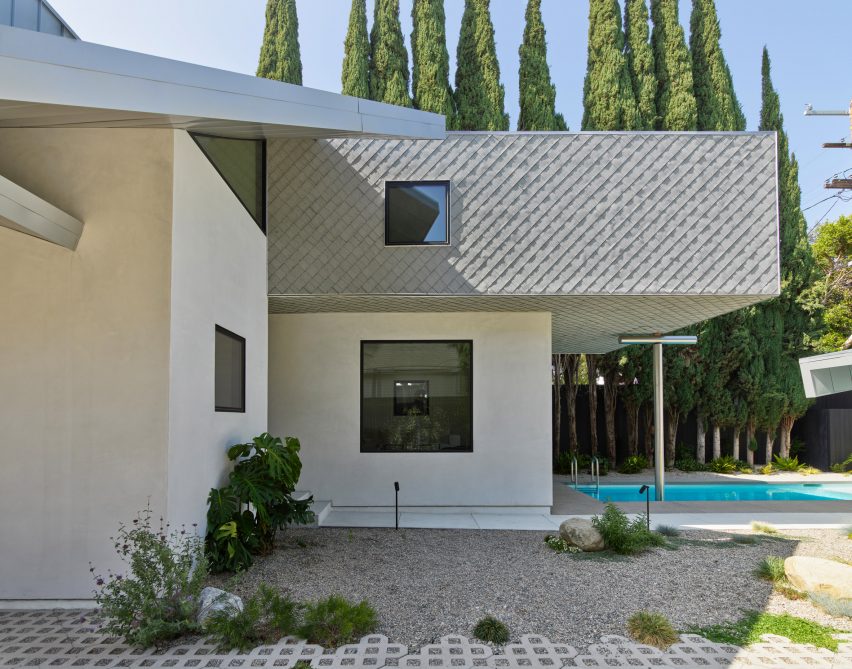
"Upending traditional notions of how a house should be organised and how it should look, [we] began this project by cutting the plan with two concrete footpaths from the outside-in, splitting the property into four unique quadrants," the studio said.
The perpendicular cuts run the entirety of the property, from front to back (north to south) and side to side (west to east). Entry and exit doors were positioned along the main axes.
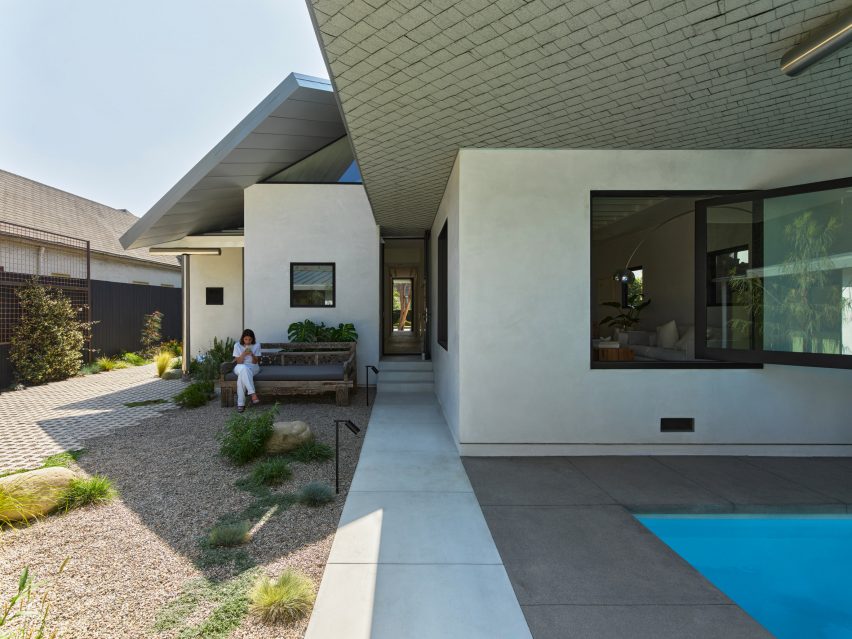
In addition to the cuts, the team added built space at the front and back of the house, increasing the home's floor area to 1,980 square feet (184 square metres). In the rear, upper portions that project outward are supported by T-shaped steel columns.
The front half of the house consists of two quadrants, which together hold three bedrooms and two bathrooms.
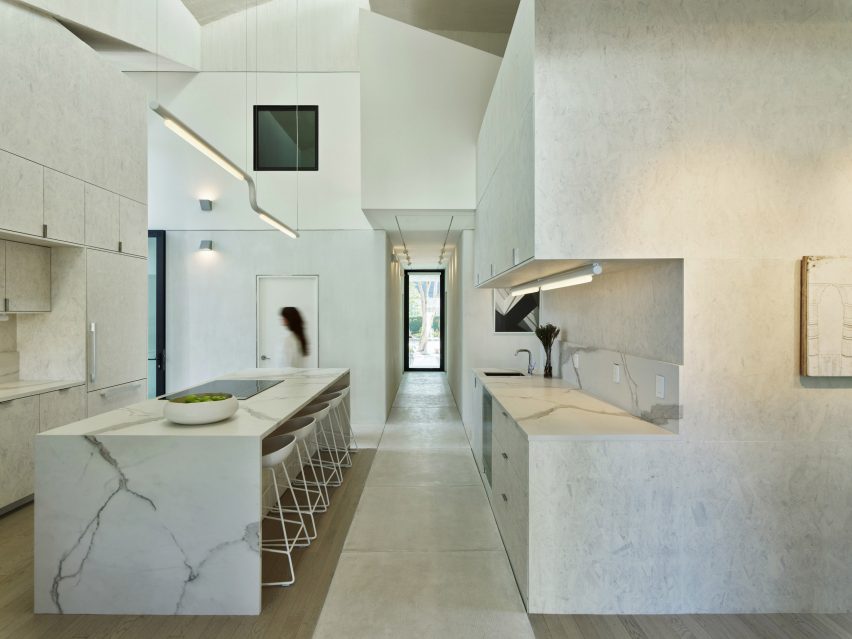
The remaining two quadrants make up the back part of the home. Combined, they encompass a kitchen, dining area, living room, powder room and service areas.
The quadrants are joined at the centre by a double-height volume that "serves as an interior courtyard and gathering place for the family", the team said.
"The aim is to evacuate the centre of the house and put a cultural proposition in its place – a new way to think about how and where to come together as a family," said LADG co-principal Benjamin Freyinger.
The central volume also helps cool the home's interior, as it facilitates cross ventilation and directs hot air toward upper operable windows.
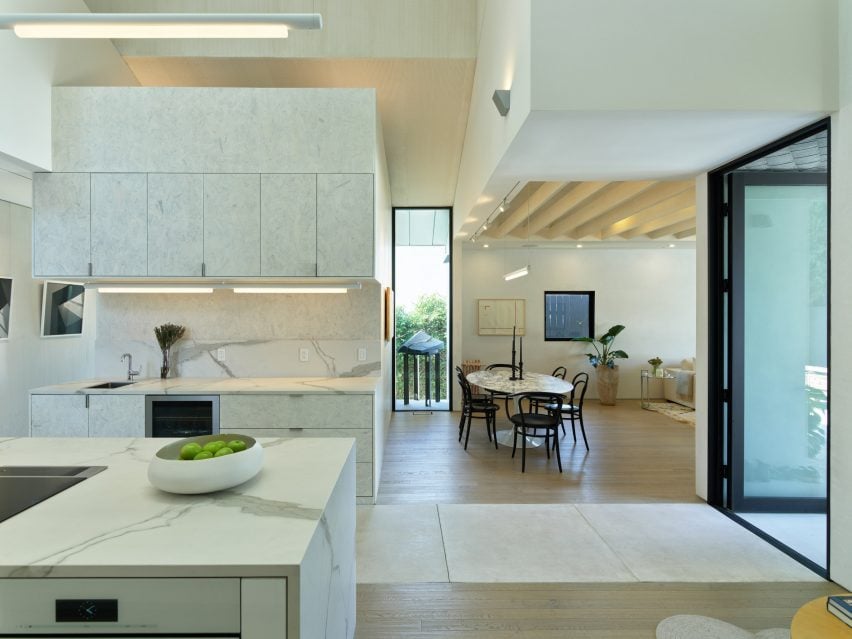
"We are taking out the hearth and replacing it with air, as an abstract idea and quite literally as a means to achieve a passively cooled interior climate," said Freyinger.
The home has a multi-faceted roof that is meant to "open up the strict rationalism of the delineated plan underneath," the team said.
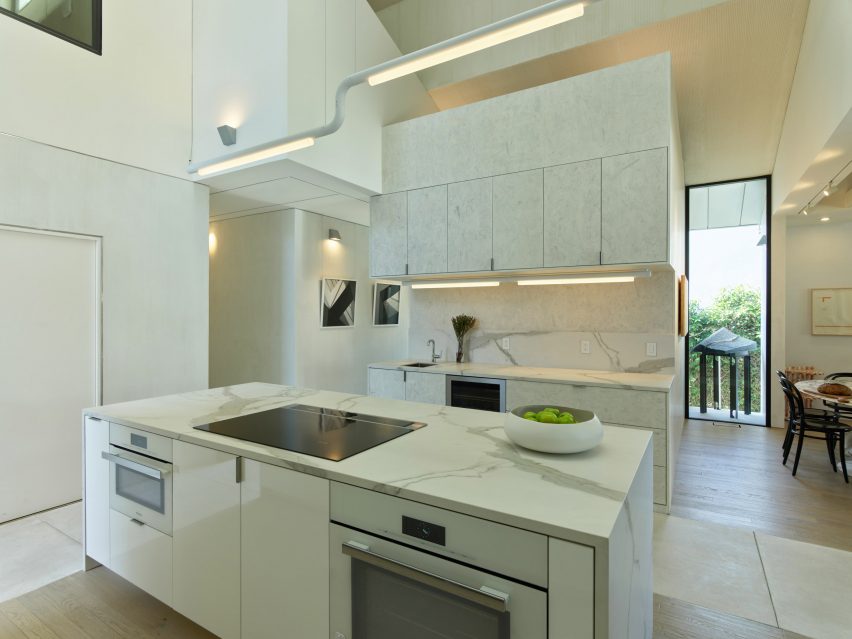
Several areas are wedge-shaped and extend beyond the walls to provide shade. The central part of the house is topped with a boxy enclosure.
"The remaining central area is covered by a double-height, upside-down box, partially unfolded into a series of projecting eaves that lap the mono-pitch wedges and bandage the whole assembly together," the team said.
"The unfolded, lapping planes of the box are projected in elevation to standard residential pitches, giving the house a contextual affinity with the mid-century spec houses on the rest of the street."
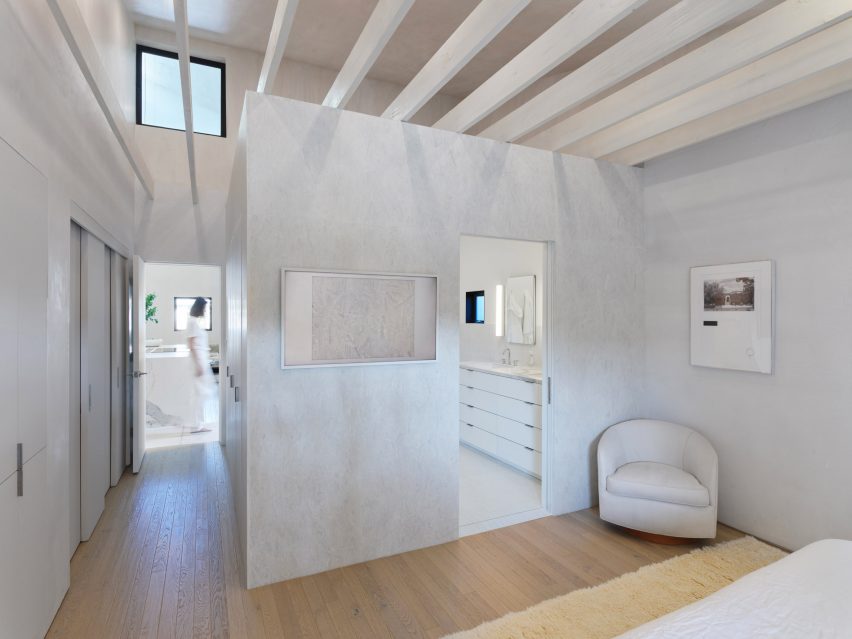
On the exterior, one finds smooth white stucco, asphalt, sheet metal and standing-seam metal.
Inside, the team incorporated a mix of textured stucco, plaster, drywall, plywood and white-washed oriented strand board (OSB).
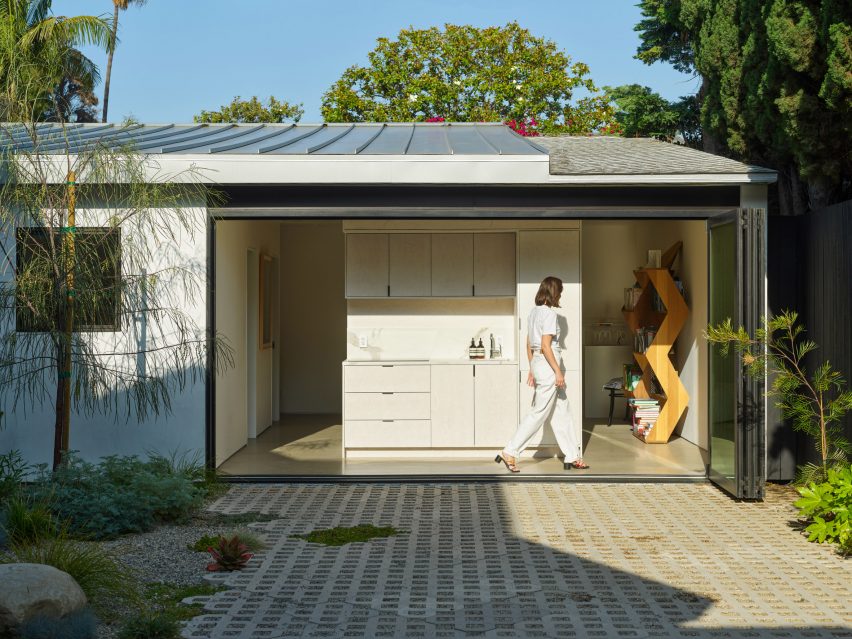
"The materials palette consists of a variety of common everyday materials that are quintessentially LA and legible to anyone who has shopped the aisles at Home Depot," the team said.
In the back of the property, the team updated an existing accessory dwelling unit (ADU), which holds a bedroom and bathroom. The rear of the house also features a yard and a slender swimming pool.
Other projects by The LADG include the expansion of a mid-century home into a live-work complex for a painter and a photographer – a project called House in Los Angeles 1. The studio is also behind a California bar that evokes an Irish pub with its green tartan wall coverings, brass accents and leather banquettes.
The photography is by Marten Elder.
Project credits:
Architect: The Los Angeles Design Group
Project team: Remi McClain (project lead), Kenji Hattori-Forth, Jonathan Rieke, Son Vu
Engineer: Nous Engineering (project lead, Omar L Garza)
General contractor: Engine Construction
Project manager: Brain McCabe
Landscape design: Big Red Sun
Interior styling: Jason Baird